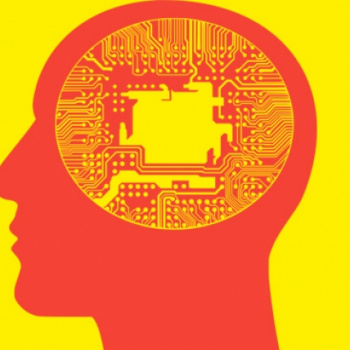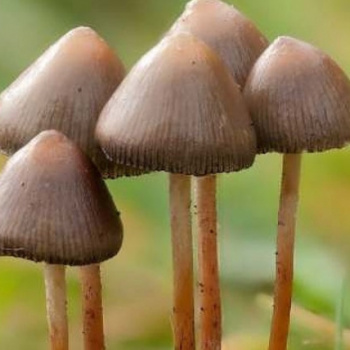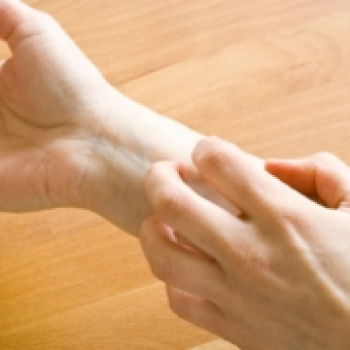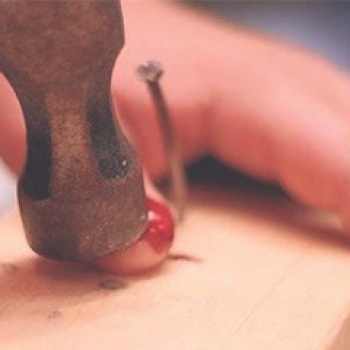Publications

Download Book here
This CINV publication collects 3 centuries of history on the patrimonial building located in La Matriz neighborhood. This building will be harboring scientists and experts of the CINV with the intention of positioning the city of Valparaiso as an international reference in the field of neuroscience.
This publication recovers the building history, from its origins as a Jesuit temple in the XVIII century, its condition as legislative center in 1828; the functioning of police headquarters by the end of the 19th century and all the different damages caused by natural disasters and fires affecting its foundations since 1905. The text also reviews the origins of different scientific research in the region, starting from the cellular physiology lab in Montemar, which constitutes a first step in the project focused on placing the city of Valparaiso as an international reference for scientific development.
Credits
© 2014, Universidad de Valparaíso
Co-financed with resources from the Millennium Scientific Initiative of the Ministry of Science, Technology, Knowledge and Innovation of Chile.
Editorial committee: Ramón Latorre, Pablo Muñoz Carvajal, Juan Carlos García, Ernesto Pfeiffer
Edition: Arantxa Martínez
Historical research: Frida del Campo, Teresita Rodríguez, Gonzalo Sotomayor. Con la colaboración de Verónica Gálvez
CINV researchers: Ana María Cárdenas, Adrián G. Palacios, Agustín D. Martínez, Alan Neely, Carlos González, David Naranjo, Fernando Danilo González Nilo, John Ewer, Juan Carlos Sáez, Kathleen Whitlock, Oliver Schmachtenberg, Pablo Muñoz Carvajal, Patricio Orio, Ramón Latorre, Tomás Perez-Acle
© Translation: Rebecca von Someren
© Original prints and illustrations: Cristián Olivos
Design and layout: Ajícolor

 La Alegría de la Ciencia: Ciencia al Tiro (CAT) is an outreach program dedicated to broaden and teach Science in different public schools of Valparaíso. Kathleen Whitlock, professor and researcher at the CINV, founded and directs the program. The mission of CAT is to strengthen communities by creating an atmosphere of scientific curiosity through a variety of hand-on workshops and fun fieldtrips experienced by children from the región of Valparaíso. In 2014 and based on the program Ciencia al Tiro, the book La alegría de la ciencia, was published. This book gathers the main experiments described in the program´s workshops including beautiful and dynamic illustrations that are very attractive for children. In 2017 the audiovisual production La Alegría de la Ciencia was filmed. This production includes 10 chapers based on the book and this material is oriented to basic education students and can be easily integrated into the classroom as complementary experimental workshop-activity. The chapters will be broadcasted in open TV by the end of this year.
La Alegría de la Ciencia: Ciencia al Tiro (CAT) is an outreach program dedicated to broaden and teach Science in different public schools of Valparaíso. Kathleen Whitlock, professor and researcher at the CINV, founded and directs the program. The mission of CAT is to strengthen communities by creating an atmosphere of scientific curiosity through a variety of hand-on workshops and fun fieldtrips experienced by children from the región of Valparaíso. In 2014 and based on the program Ciencia al Tiro, the book La alegría de la ciencia, was published. This book gathers the main experiments described in the program´s workshops including beautiful and dynamic illustrations that are very attractive for children. In 2017 the audiovisual production La Alegría de la Ciencia was filmed. This production includes 10 chapers based on the book and this material is oriented to basic education students and can be easily integrated into the classroom as complementary experimental workshop-activity. The chapters will be broadcasted in open TV by the end of this year.
This initiative rises in 2013 leaded by Dr. Schmachtenberg and constituted by a group of students from the Masters and PhD program who are in charge of translating current and relevant high impact scientific publications in the field of neuroscience. Thanks to this translation to a common language these studies can be understood by the general public, helping people to increase their knowledge on different topics of interest and to become familiar with the scientific language and production. Articles translated and written by the students are periodically published in the culture and city section of El Mostrador, an online newspaper with a high impact on society. This approach is currently in the last phase of editing a book that will be published soon with a selection of the best articles that aim for offering scientific information accessible to all publics.
Cómo el consumo de grasa modifica el cerebro y hace subir de peso
Un grupo de investigadores se preguntó si el aumento de proteína o grasa en la dieta tenía alguna consecuencia a nivel cerebral, por lo que estudiaron el efecto de estas…
El sofisticado cerebro de los pulpos y su similitud con el de los humanos
Una investigación revela algunas posibles similitudes entre el cerebro de los pulpos y los vertebrados.
Estudio indicó qué tipos de plantas psicoactivas utilizaba cultura que habitó el norte de Chile hace más de 1000 años
Artefactos chamánicos de la “Cueva del Chileno” demuestran uso de plantas con propiedades psicotrópicas.
Reviviendo el cerebro: nuevos hallazgos científicos cuestionan el límite entre la vida y la muerte.
Investigadores de Yale recuperaron funciones en cerebros animales varias horas después de la muerte.
Cómo el internet ha cambiado la forma en que pensamos
La actual utilización excesiva de tecnología ha generado consecuencias, entre ellas, el uso de teléfonos inteligentes a edad temprana se ha vinculado a niños fácilmente distraibles…
Daño retinal inducido por luz azul
Estudio investiga el efecto en la retina, de la luz azul emitida por las pantallas LED.
Por qué en las neuronas espejo podría estar la explicación de la empatía humana.
Entender estos mecanismos neuronales, significaría un gran avance en el entendimiento de nuestro cerebro
Científicos investigan efectos biológicos en los ecosistemas durante los eclipses
Los cambios de comportamiento de los animales locales se estudiaron utilizando diversas tecnologías
Los hábitos del padre también cuentan en la herencia genética
¿Qué hay con respecto a los vicios y estilo de vida del padre? ¿Tendrán algún efecto directo en el feto también?.
Inquietante estudio indaga cómo parásito ejercería control mental en humanos para correr mayores riesgos
Neurocientíficos identifican que plantas y animales poseen el mismo neurotransmisor que detecta el daño en el organismo
Depresión podría afectar oscilación cerebral que actúa como GPS interno
En el estudio se investiga la comunicación entre diferentes regiones cerebrales que actúan de manera coordinada.
Neurocientíficos dejan atrás la ciencia ficción y crean el primer ojo biónico con impresión 3D
Con materiales de distintas capacidades conductoras.
¿Qué tienen en común el ostión y los telescopios reflectores?
Los telescopios reflectores utilizan espejos para detectar la luz y formar una imagen, de esta forma también lo harían los ostiones.
La transmisión del conocimiento está estrechamente relacionada con las conexiones sociales
¿Las personas interesantes ―o que saben hacer cosas novedosas― tienen más amigos?
Señales químicas sociales, comunicación olfativa y autismo
Un equipo de científicos decidió investigar cómo las respuestas a las señales químicas de una persona del espectro autista, son distintas a las de las personas con desarrollo típico.
Modelamiento matemático revela como un colibrí usa efecto Doppler para cantar con las plumas durante el cortejo
Investigadores estudian el comportamiento reproductivo del Colibrí de Costa, descubriendo un singular comportamiento de cortejo que aprovecha el efecto Doppler.
El estrés excesivo a temprana edad podría disminuir la capacidad de resiliencia
Científicos revelan efectos del estrés sobre la resolución de problemas y cómo éste puede ser clave en el desarrollo de los niños.
Hongos alucinógenos ayudan al tratamiento de pacientes con depresión severa
Investigadores del Imperial College de Londres, exploran los efectos del “hongo mágico” en pacientes con depresión severa.
Científicos descubren circuito cerebral que controla la agresividad según la hora del día
Los niveles de agresividad que presentan ratones durante el día, es controlada por el reloj circadiano central
El futuro de Asimov ya está aquí: Inteligencia artificial diagnostica y predice efectividad del tratamiento para pacientes con esquizofrenia
¿Por qué los científicos llevan más de un siglo buscando las células “madre” en el cerebro adulto?
Los primeros trabajos que relatan la presencia de células “madre” en el cerebro datan de 1901.
Científicos descubren neuronas responsables de la picazón contagiosa
La picazón correspondería a un tipo de comportamiento que se produce al observar a otro realizándolo. […]
La forma que tiene el cerebro para modificar comportamientos después de los errores
Por Hernán Álvarez / CINV
Equivocarnos es parte de la vida ante lo cual es interesante entender la forma en que el cerebro se enfrenta a los errores […]
Científicos buscan comprender cómo se desarrolla en nuestro cerebro el fraude, la malversación y la coima
Por Adolfo Agurto/ CINV
Es sabido que cuando existen comportamientos de transgresión o de deshonestidad, y estos no son descubiertos o castigados […]
Evidencia científica demuestra que cerebro de la mujer cambia de tamaño durante ciclo menstrual
Científicos demostraron que en el periodo menstrual, el volumen del hipocampo cambia.
DeMente. El cerebro, un hueso duro de roer
Title: DeMente: el cerebro, un hueso duro de roer
Authors: 28 Postgraduate Students,, Centro Interdisciplinario de Neurociencia de Valparaíso
Scientific Editors: Oliver Schmachtenberg and Jesús Olivares
Publisher: Catalonia
Pages: 224
For sale in the main bookstores of the country and in Catalonia.cl
Why does music give us pleasure or chills? How can a harmful memory be removed from our memory? Can we choose what we dream of? Is violence part of human nature? o Why do we feel socially attached to dogs ?, are some of the questions posed in the book “DeMente, el cerebro, un hueso duro de roer” (DeMente, the brain, a tough nut to crack). This was prepared by a group of 28 graduate students from our center, based on a selection of neuroscience articles published in different world-renowned journals.
Colaborative science
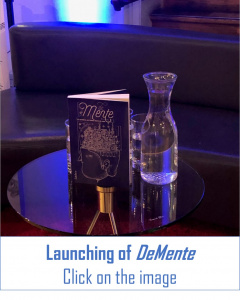 In a close, didactic language and with tasty anecdotes of characters and historical events, the project collects various findings published in international magazines, and translates them into a friendly story, making a dialogue with scientific evidence with deep and everyday issues. The five chapters of the book are: “¿Qué tenemos en mente?” (What do we have in mind?), “Evolución deMente” (Evolution of Mind), “SocialMente” (Social Mind), “FrágilMente” (Fragile Mind) and “SanaMente” (Healthy Mind). The work was born at the initiative of the CINV and Dr. Oliver Schmachtenberg, biologist, neuroscientist expert in vision and smell, and UV academic. This, after proposing the creation of a special literature seminar with Master and Doctorate students in Neuroscience, from the University of Valparaíso.
In a close, didactic language and with tasty anecdotes of characters and historical events, the project collects various findings published in international magazines, and translates them into a friendly story, making a dialogue with scientific evidence with deep and everyday issues. The five chapters of the book are: “¿Qué tenemos en mente?” (What do we have in mind?), “Evolución deMente” (Evolution of Mind), “SocialMente” (Social Mind), “FrágilMente” (Fragile Mind) and “SanaMente” (Healthy Mind). The work was born at the initiative of the CINV and Dr. Oliver Schmachtenberg, biologist, neuroscientist expert in vision and smell, and UV academic. This, after proposing the creation of a special literature seminar with Master and Doctorate students in Neuroscience, from the University of Valparaíso.
In this space, week after week, the researcher and PhD and Master students met to choose topics, discuss them, develop them and edit them. Thus, the collaborative experience led to the creation of NeuroNews, articles that later – and since 2014 – were published by the electronic newspaper El Mostrador, in an unprecedented alliance between this medium and the center of excellence, thanks to which it was possible to massify and extend the material, to a larger and much more transversal.
 “This popular science book is a collective work, a fact that in some way reflects the spirit of scientific work, but in this case, targeting a general public. It is a very different bet that seeks to bring certain discoveries to people, in an entertaining format that aims to bring science closer to the community. An interesting aspect is the diversity of everyday topics that are addressed, such as music and its effect on the nervous system, and others related to evolutionary, social, religious, etc. Issues such as violence, poverty and its repercussions on the brain, or menopause, are also explained in this book, from the contributions of neuroscience ”,explains Dr. Jesús Olivares, scientific editor of DeMente –together with Dr. Oliver Schmachtenberg-, and author of four articles present in the text.
“This popular science book is a collective work, a fact that in some way reflects the spirit of scientific work, but in this case, targeting a general public. It is a very different bet that seeks to bring certain discoveries to people, in an entertaining format that aims to bring science closer to the community. An interesting aspect is the diversity of everyday topics that are addressed, such as music and its effect on the nervous system, and others related to evolutionary, social, religious, etc. Issues such as violence, poverty and its repercussions on the brain, or menopause, are also explained in this book, from the contributions of neuroscience ”,explains Dr. Jesús Olivares, scientific editor of DeMente –together with Dr. Oliver Schmachtenberg-, and author of four articles present in the text.
Music, dreams and lethal violence.
“In the XXI century, the great questions of humanity are limited to a handful: how the universe was created, how life originated, there is life on other planets, we can defeat disease and live forever,” explains Dr. Ramón Latorre at the beginning of the book, also reminding us of the human interest in knowing the mysteries of the brain since time immemorial. That is: for more than 8 thousand years before Christ, or, in the time of the Greeks, a people who strove to understand the origin of emotions and some diseases such as epilepsy.
In this context, a cross-cultural theme is the one that begins the first chapter of the text, in the article Why do we feel pleasure in music ?, prepared by the neuroscientist Jesús Olivares. In this text, it is explained what happens in our brain when we face a melody. Alluding to an experiment carried out on 20 specially selected volunteers, it was possible to collect information and then explore what happened in 10 people who felt chills with music, and in another 10 who did not, but did declare themselves music fans. The result of the study, carried out by academics from Harvard and Wesleyan universities, contemplated evaluating the scales of pleasure generated by listening to different songs, from origins as diverse as Wagner or Coldplay. In this scenario, the scientists found that, in those participants who felt chills, there was a greater connection between the auditory cortex and the reward system. What is the latter?
“The reward system of the brain is a set of nervous structures that makes us more inclined to repeat behaviors and stimuli that we liked in the past, such as sex, the consumption of certain foods or drugs. This same system is activated with songs or musical pieces that cause us pleasure, since it is connected with the auditory cortex ”, explains Dr. Olivares.
 The dream world is another theme that motivates researchers from all over the planet, inspiring even the artistic creation of great figures such as Paul McCartney, who in 1965 “confessed that he was inspired by” Yesterday “while he was sleeping.” This is detailed in another text in this book, prepared by Cristian Calfún. Can you imagine being able to choose what we dream of? is the name of the article that addresses the fascinating world of lucid dreams and the possibility of being able to choose what we live during the nights.
The dream world is another theme that motivates researchers from all over the planet, inspiring even the artistic creation of great figures such as Paul McCartney, who in 1965 “confessed that he was inspired by” Yesterday “while he was sleeping.” This is detailed in another text in this book, prepared by Cristian Calfún. Can you imagine being able to choose what we dream of? is the name of the article that addresses the fascinating world of lucid dreams and the possibility of being able to choose what we live during the nights.
As the scientists describe, the development of this type of dreams during the REM phase would be related to the activation of certain brain areas, a matter that was verified in experiments with 27 healthy volunteers. A greater knowledge of these mechanisms could help not only to handle the secrets of how to be conscious within a dream and manage its outcome, but also to understand and deliver better treatments in pathologies such as post-traumatic stress and schizophrenia.
“Lethal Violence: A Cultural or Genetic Human Trait?” is another issue raised in DeMente. In this document, its author, the scientist Cesar Ravello, tries to explain whether it is a psychological, sociological phenomenon, or is rooted in a deeper level of animal nature that we have inherited from our evolutionary ancestors. The approach that this document also makes demonstrates the implication that neuroscience has in addressing major human and social problems.
Source: CINV.
Presentation at Festival de Autores de Santiago 2019
Check the main press publications below:
Interviews at Mega and radio Duna:
Interview program Cadena Nacional de canal Via X, El Mercurio, Radio BioBio and others related interviews:
Publication at El Mostrador
Interview to Juan Morales at Las Últimas Noticias
Interviews at Radio Pauta, radio Concierto and Las Últimas Noticias.







